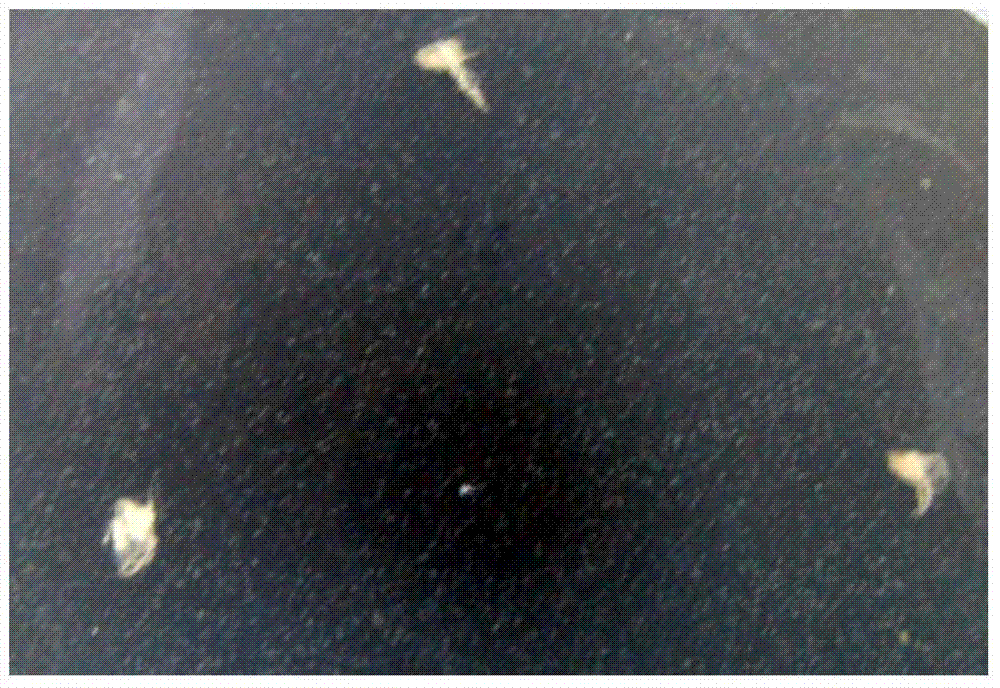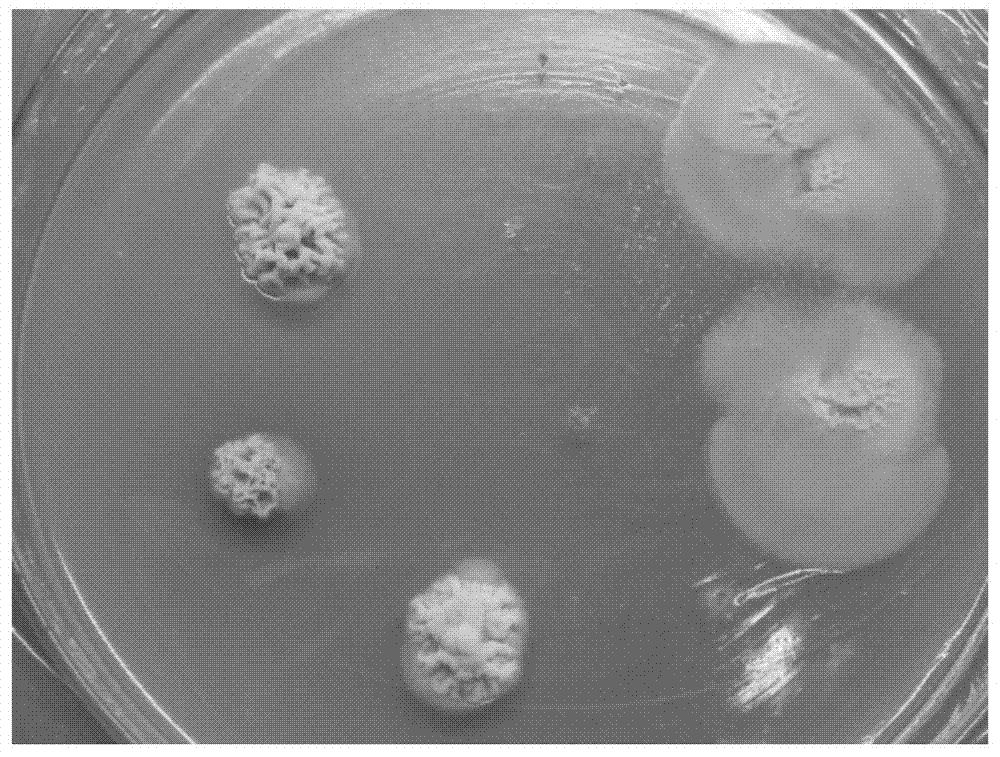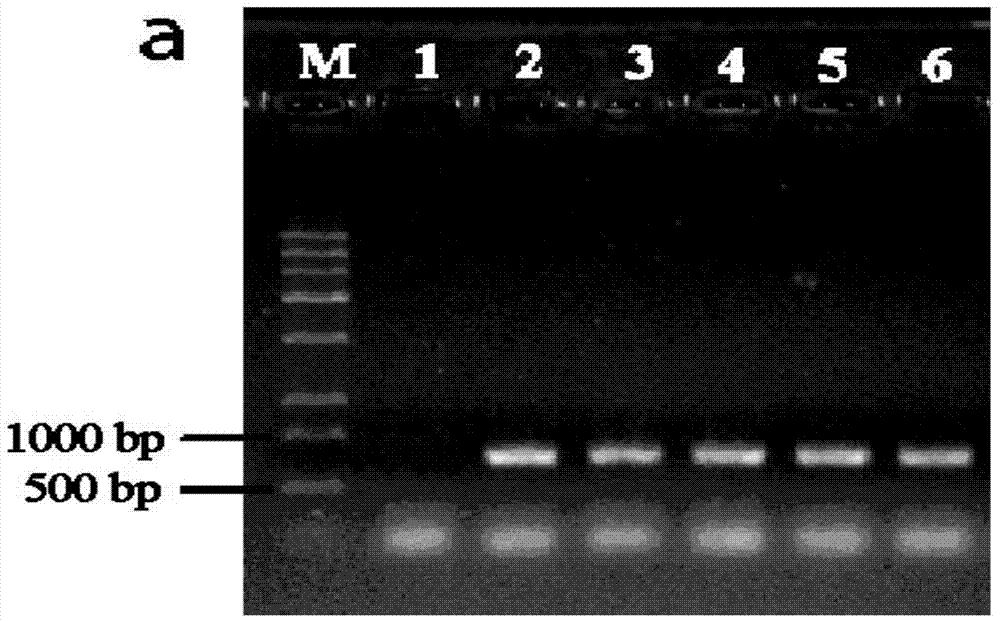Method for agrobacterium-induced genetic transformation of Ustilaginoidea virens
An Agrobacterium-mediated and genetic transformation technology is applied in the improvement field based on Agrobacterium tumefaciens-mediated genetic transformation of Aspergillus oryzae, which can solve the problems of unstable foreign genes and low transformation rate.
- Summary
- Abstract
- Description
- Claims
- Application Information
AI Technical Summary
Problems solved by technology
Method used
Image
Examples
Embodiment 1
[0040] Embodiment 1: Agrobacterium-mediated method for genetically transforming Aspergillus oryzae
[0041] (1) The Aspergillus nidulans promoter and the green fluorescent protein gene gfp were recombined into the pCAMBIA1300 plasmid containing the hygromycin B gene to obtain the pCAMBIA1300-TrpC-GFP recombinant plasmid (verified by sequencing, the recombinant plasmid contained the Aspergillus nidulans promoter , hygromycin B gene hpt and green fluorescent protein gene gfp), and transform Agrobacterium with recombinant plasmids.
[0042] Inoculate a single colony of Agrobacterium AGL-1 (provided by the Institute of Biotechnology, Zhejiang University) on an LB solid medium plate containing a final concentration of 50 μg / ml rifampicin, culture at 28°C for 40 hours, pick a single colony and transfer it to 25 ml containing In LB liquid medium with a final concentration of 50 μg / ml rifampicin, shake culture at 28°C, 150 rpm, and dark conditions until OD 600 If it is 0.8, take 0.1m...
Embodiment 2
[0061] Example 2 Detection of Sensitivity of Aspergillus oryzae to Hygromycin B
[0062] Add hygromycin B to the PSA solid medium so that the final concentration of hygromycin B is 100 μg / ml. The wild-type Aspergillus oryzae SX02-01 and the transformants obtained by the method in Example 1 (that is, Aspergillus oryzae SX0201 containing the plasmid pCAMBIA1300-TrpC-GFP) were respectively punched with a 5mm-diameter hole puncher to obtain mycelial blocks at the edge of the colony , and then inoculate the hyphae block onto the above-mentioned PSA solid medium containing hygromycin B, and culture at 26° C. for 8 days. see results figure 1 and figure 2 shown. The results show that the wild-type Aspergillus oryzae SX02-01 cannot grow on the medium containing the hygromycin B antibiotic because it does not contain the hygromycin gene, and the transformant obtained by the method of Example 1 (that is, contains the hygromycin B gene Aspergillus oryzae SX02-01) can grow on the medi...
Embodiment 3
[0065] Example 3 Effect of Metal Ion Activator on Agrobacterium Transformation Effect
[0066] CoCl in the improved AIM culture medium in step (2) of Example 1 2 ·6H 2 The final concentration of O was changed to 50, 100, and 150 mg / L, and the improved AIM culture solution without cobalt ions was used as a control. The co-cultivation temperature was 22 ° C, and the incubation time was 40 h. Other operations were the same as in Example 1 (transformation, pre-induction , co-cultivation, selective culture, re-screening and PCR detection), the results are shown in Table 3, metal cobalt ions have a significant role in promoting the conversion, and wherein the conversion rate of cobalt ion concentration is 100mg / L is the largest, which can reach 90.57%.
[0067] Table 3 Transformation effect of Agrobacterium adding metal ion activators
[0068]
[0069] Transformation rate = positive bacteria / total number of bacteria × 100%
PUM
 Login to View More
Login to View More Abstract
Description
Claims
Application Information
 Login to View More
Login to View More - R&D
- Intellectual Property
- Life Sciences
- Materials
- Tech Scout
- Unparalleled Data Quality
- Higher Quality Content
- 60% Fewer Hallucinations
Browse by: Latest US Patents, China's latest patents, Technical Efficacy Thesaurus, Application Domain, Technology Topic, Popular Technical Reports.
© 2025 PatSnap. All rights reserved.Legal|Privacy policy|Modern Slavery Act Transparency Statement|Sitemap|About US| Contact US: help@patsnap.com



